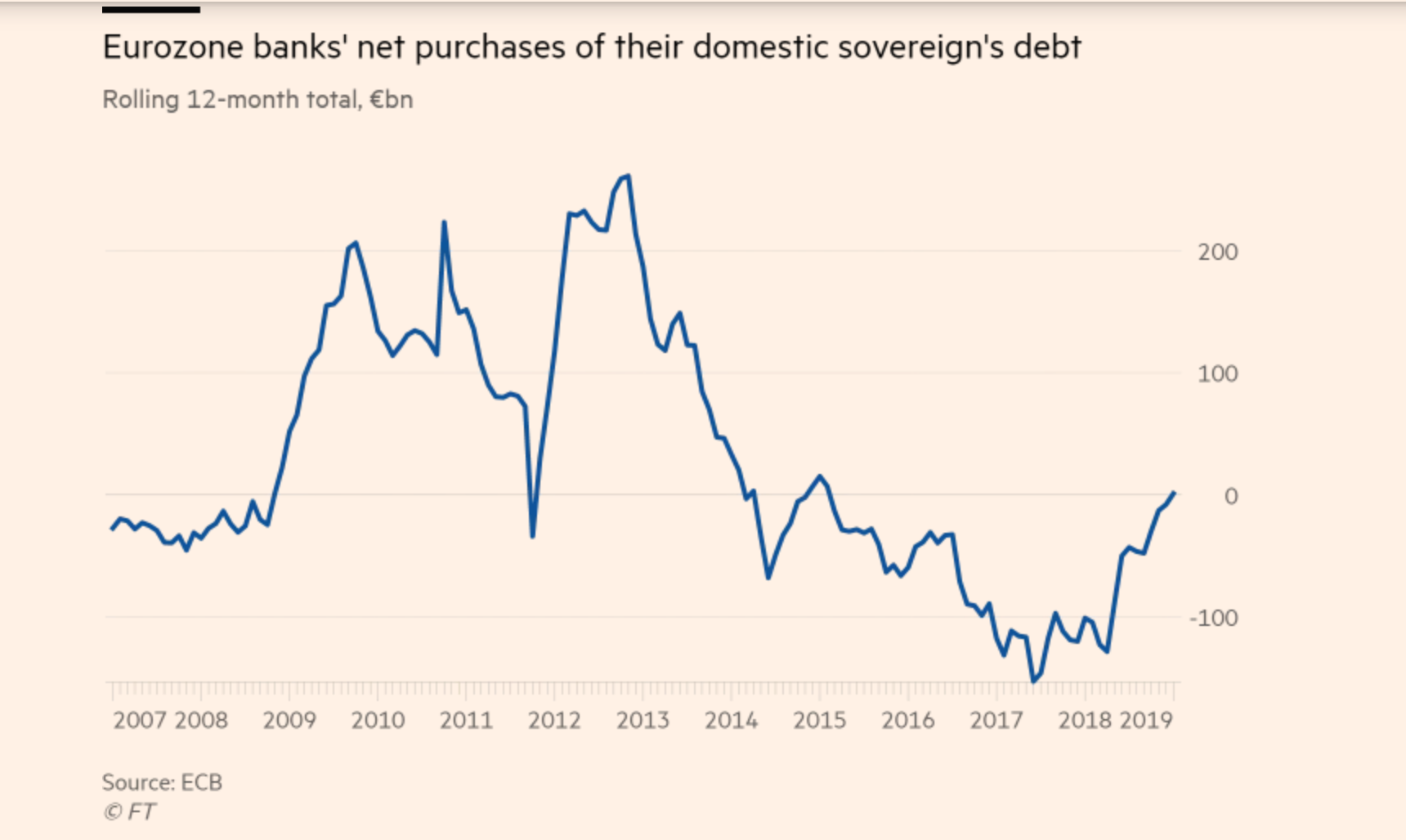最後更新日: 2024年04月12日
歐元區入面嘅銀行購買本土國家發行國債嘅淨額,喺一月錄得正數,係2015年以黎首次。
-
- 以下為FT整理嘅數據圖表,可以見到近年歐元區嘅銀行出售本土國債嘅金額,係長期高於購入額
銀行持有本土國債最大嘅憂慮,係會促成左銀行體系同政府財政之間嘅Doom Loop,又或者稱為累鬥累偱環。
- 累鬥累係指當銀行體系出現問題時,可能會拖累國家財政穩定;而國家財政不穩又可能反過黎令銀行體系受到更大嘅衝擊。
- 銀行直接持有唔少國家發行嘅債券,當國家財政狀況轉差,銀行手上嘅持債價值可能因而下降,咁就會直接損害銀行嘅資產價值。
- 同一時間,由於銀行係國債嘅主要購買者,換言之係政府融資上擔當重要角色。若果銀行體系出現危機而影響到佢借貸能力,無法如常購入國家債券,咁就可能令政府嘅融資成本上升,甚至可能有短期流動性下降嘅問題。
【更詳細有關銀行與政府財政嘅累鬥累偱環,可以按此閱讀舊作。】
當然,目前仍只係有一個月嘅數字,未可以講出歐元區內銀行會長期增持本土國債。
重要嘅一個題外話,其實銀行增持本土國債亦係歐央行實行TLTRO時一個憂慮。正因為擔心銀行取得央行提供嘅低息貸款後,會將錢投放係本土國債,促成累鬥累問題,所以要有「Targeted」LTRO,即係就係指銀行可以向歐央行借貸嘅金額,同銀行向企業或居民發放嘅貸款額掛鈎,以鼓勵銀行將低息貸款借出實體經濟。
係上星期嘅議息會議記者會,歐央行行長Mario Draghi就向記者解釋左一次:
Q: Could you elaborate a bit more on the choice of the TLTRO with T instead of an LTRO; what have been the reasons for this?
Draghi: The first LTROs were quite effective for the time when they had been designed. But they were used – not 100% of course – but they were used also to kind of buy sovereign bonds. At that time, the yields on bonds were high and banks especially in parts of the eurozone, where to lend to the economy was very risky because these parts were in huge recession, they bought sovereign bonds. What then we wanted to achieve with the “T” was to make sure to minimise this possibility to make sure the banks borrow at a very good rate, but in order to lend to the economy and to firms and households in the private sector, not to buy sovereign bonds.
本網內容全數由Patreon嘅讀者贊助
如果你都鐘意我地嘅文章,可以考慮成為我地最新嘅Sponsor !
想睇到我地最新嘅文章,可以去Telegram follow 我地 詳見《Econ記者使用說明》








